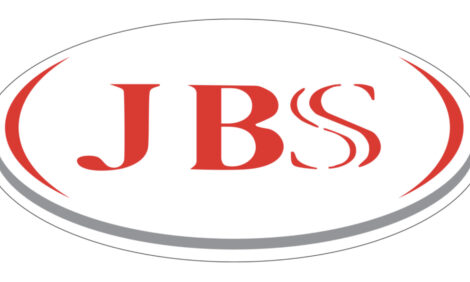



New antibiotics advice highlights need for range of veterinary antibiotics to treat disease
New scientific advice issued this week (28 January) by the European Medicines Agency (EMA) on risk categorisation of antibiotics for use in animals has been welcomed by RUMA’s secretary general Chris Lloyd, who says it also identifies where a lack of alternative products challenges the treatment of disease in some species.As a result, the updated advice from EMA’s Antimicrobial Advice Ad-Hoc Expert Group (AMEG) will be particularly helpful in guiding future targets and policy in UK farm animal health and welfare, he says.
“The EMA’s AMEG constantly reassesses the impact on human health of using different antibiotics in animals, alongside the need to treat disease in animals for health and welfare reasons. This is a unique approach globally,” explains Mr Lloyd.
“The advice also focuses on specific resistance issues within the geographical region of Europe, which is why it is used by the government’s Veterinary Medicines Directorate, RUMA, and most professional veterinary organisations within the UK as the key source of expert guidance.”
The main change in the new advice is that four ‘risk’ categories of antibiotics A to D have been identified, replacing the previous three categories.
The designation of Category A (‘Avoid’) antibiotics by EMA AMEG as ‘not appropriate for use in food producing animals’ represents products that are not authorised for use as veterinary medicines in the UK anyway, says Mr Lloyd. However, the designation does act as a reminder that not all antibiotics can be used to treat animals, and scientifically appropriate measures are in place to protect public health, he points out.
Category B (‘Restrict’) products, also known as highest-priority Critically Important Antibiotics (HP-CIAs), are only to be used as a last resort.
A new intermediate Category C (‘Caution’) has been created for antibiotics which should be used when there is no available product in Category D (‘Prudence’) that would be clinically effective.
The introduction of Category C should encourage veterinary surgeons and farmers to discuss whether lower-risk products within Category D could be used as an alternative, says Mr Lloyd.
“The new category should also focus minds on what management changes can be made to avoid the need for antibiotic treatments in the first place – such as biosecurity, vaccination, improved nutrition, or alterations to infrastructure such as housing or handling facilities,” he explains.
However, the advice also acknowledges there is a lack of alternative treatments to many antibiotics in the new Category C should disease arise. This means that veterinary surgeons can still rightly prescribe Category C products in the interests of protecting animal health and welfare.
“For example, there is no doubt that macrolides are extremely useful in the effective treatment of some Mycoplasma species in poultry, Lawsoniain pigs, respiratory tract infections in cattle and in some circumstances, lameness in sheep. Similarly, in aquaculture, florfenicol is used in trout on cascade for treatment of Rainbow Trout Fry Syndrome (RTFS), for which there is currently no vaccine available.”
In the new advice, the HP-CIA products defined in Category B remain the same as previously, namely polymyxins (colistin), 3rd and 4thgeneration cephalosporins and the family of quinolones, including fluoroquinolones.
Mr Lloyd says while use of these products is already very low in UK farm veterinary practice at 0.7 percent of total sales, and should only be a last resort, their continued availability remains important in treating some diseases in pigs and fish especially.
“AMEG’s advice particularly acknowledges that there are few alternatives to first generation quinolone oxolinic acid for the treatment of Enteric Redmouth (ERM) in trout,” he explains. “This underlines the importance of the continued availability of these products subject to strict veterinary oversight and risk assessment.”
While most aminoglycosides are now in Category C, spectinomycin has stayed in Category D, signifying a lower level of risk. The explanation given for this is its lack of use in human medicine and key differences to other aminoglycosides which lowers risk of cross-resistance.
Mr Lloyd says this is very good news for the sheep sector which relies on being able to treat E. coli infections in newborn lambs with this antibiotic.
“However, spectinomycin resistance is rising on-farm, underlining the importance of using it only in targeted applications and only after other interventions such as biosecurity, vaccines and effective use of colostrum have been fully explored.
“This is one reason why the word ‘Prudence’, which AMEG has appended to Category D, is apt. It’s a timely reminder that all antibiotic treatments should be used responsibly and only when needed. At no time is routine preventative use of antibiotics acceptable,” he adds.
A summary of the new classifications
- Category A ‘Avoid’ replaces category 3; these are antibiotics which are reserved for human treatment only and are not permitted for use in food-producing animals.
- Category B ‘Restrict’ replaces category 2; these are commonly known as the highest-priority Critically Important Antibiotics (HP-CIAs), and should be confined to use only as a last resort after sensitivity testing has been conducted when no other antibiotic would be clinically effective. The antibiotics in this group remain the same – namely 3rdand 4th generation cephalosporins, quinolones including fluoroquinolones and polymyxins, including colistin.
- Category C ‘Caution’ is new, and signifies an elevated risk. Antibiotics in this category should only be used if there is no alternative lower-risk product available in Category D.
- Category D ‘Prudence’ replaces category 1 as the lowest-risk group, but nonetheless advises all products should be used with prudence.










